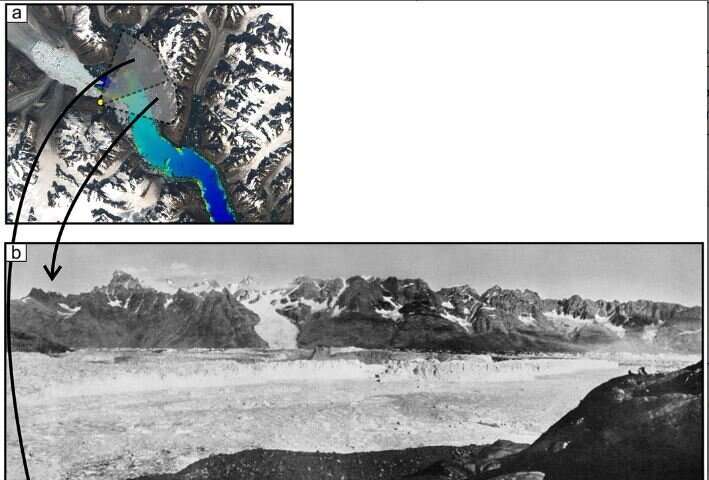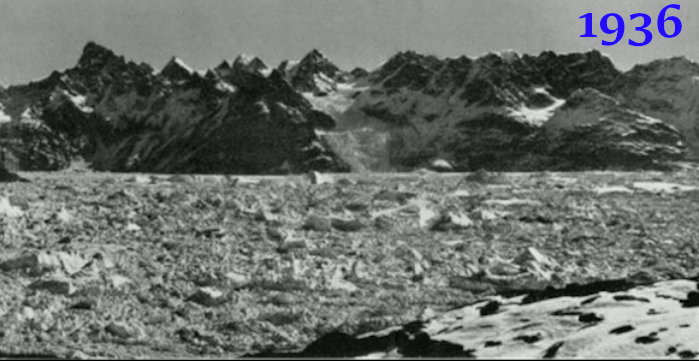Major Greenland glacier collapse 90 years ago linked to climate change

Ninety years ago there were no satellites to detect changes in Greenland's coastal glaciers, but a new study combining historical photos with evidence from ocean sediments suggests climate change was already at work in the 1930s and led to a major collapse of the one of Greenland's largest coastal glaciers.
The only reason scientists today know about the Kangerlussuaq Glacier's dramatic retreat in the 1930s is the existence of both aerial and ground-level photos taken by explorers before and after the glacier's tongue had dislodged itself from a submarine ridge. The ridge had pinned the glacier in place, perhaps making the glacier relatively more stable than many other coastal Greenland glaciers.
"We found out about the collapse by looking at old pictures," said geologist Flor Vermassen of the Geological Survey of Denmark and Greenland. "And this matched our findings from the sediments." Vermassen is the lead author of a new paper describing the Kangerlussuaq collapse in the AGU journal Geophysical Research Letters.
The historical aerial and ground-level photos were from Danish and British expeditions that set out to Greenland's east coast from 1930 through 1935. The photos show a dramatic retreat of the glacier following a well-documented period of air and water warming in the 1920s, Vermassen explained.
To confirm the timing of the Kangerlussuaq collapse and the changing water temperatures, Vermassen and his colleagues analyzed sediment cores collected from the seafloor in front of the glacier. They found chemical and physical evidence that confirmed the warming, including a layer of debris that marked the melting of ice and the fall of ice-rafted debris onto the sea floor.

Surprisingly, the collapse of Kangerlussuaq stands out among Greenland glaciers not because it is early, but because it is late. The year 1900 has been used by researchers as a Greenland‐wide point in time when glaciers started to retreat, Vermassen and his colleagues write. It was the pinning of this glacier against a large submarine ridge that might have kept Kangerlussuaq stable for years longer.
"It's a rare thing to be able to show such a big event before the satellite era." Vermassen said. "It fits in the general decrease in ice in the 20th century."
More information: Flor Vermassen et al. A Major Collapse of Kangerlussuaq Glacier's Ice Tongue Between 1932 and 1933 in East Greenland, Geophysical Research Letters (2020). DOI: 10.1029/2019GL085954
Journal information: Geophysical Research Letters
Provided by American Geophysical Union
This story is republished courtesy of AGU Blogs (http://blogs.agu.org), a community of Earth and space science blogs, hosted by the American Geophysical Union. Read the original story here.





















